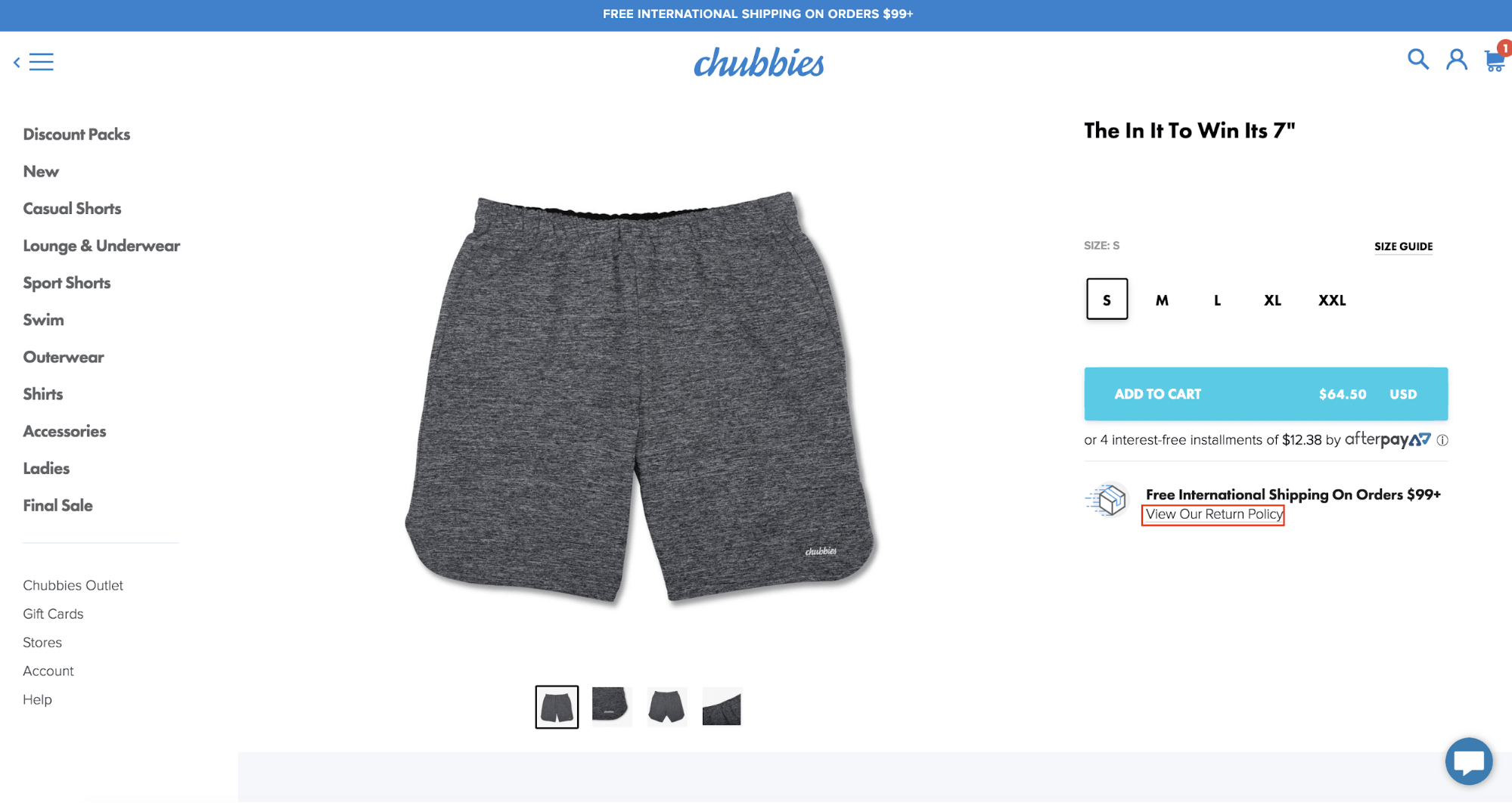
Mobile-First Award 2025: Public voting for the best mobile apps in Ukraine is now open


 25.04.2019 08:05
25.04.2019 08:05Returns, refunds, and exchanges are all a part of doing business.
Customers might be unsatisfied with their order for a number of reasons—it arrived damaged, they ordered the wrong size, or it simply didn’t meet their expectations. So they ask for a replacement or their money back.
But without a system for handling these requests, they can eat up a lot of time, energy, and money with hours spent on customer service emails, and spikes in shipping expenses for replacement products, especially after the holidays.
The good news is that it’s never too late to address the problem. With a clearly communicated return policy and the right system in place, returns and exchanges can be transformed from a dreaded aspect of ecommerce into an opportunity that actually generates new profits for your business and increases customer loyalty.
But before we dive into how to write a return policy for your store and implement a system to handle requests, let’s talk about why it’s so important to get returns and exchanges right.
Getting a return request can be painful both financially and emotionally.
Refunding a customer’s order can result in a loss of profitability on orders, and knowing that someone disliked your product can be disheartening for business owners that strongly believe in the benefits of what they sell.
For these reasons, it can be tempting to ignore the reality of returns and exchanges and leave the mounting problem unaddressed.

Over time, however, customer complaints about your return policy can start to filter onto social media, showing up as comments under your ads or even in Google searches about your business. This is where a poorly implemented returns system starts to negatively affect your overall reputation as a business. If bad sentiment about the buying experience starts to spread online, it is likely you will see a drop in conversion rate.
Processing every return manually and dealing with customers on a case-by-case basis can also be expensive for your business operations and exhausting for customer service employees. If the time and expense to process a return or exchange isn’t monitored and optimized, it can even prevent you from scaling your business.
Many innovative businesses have recognized that a customer-centric return policy is a powerful marketing tool.
According to UPS, 68% of shoppers check a website’s return and exchange policy before making a purchase. That’s why many brands now advertise “free”, “easy”, “no-hassle” returns and exchanges to increase conversion rates and purchases.
A return policy that benefits the customer is often the differentiator between businesses with a strong repeat purchase rate and those that rely on one-time purchases only. As the cost to acquire customers rises, many businesses are looking at how to retain customers and increase their lifetime value.
Although a return or exchange may not make a business profitable on first purchase, the better customer experience is more likely to lead to a higher retention rate and long-term revenue growth.
Lastly, your reputation will benefit most from offering easy returns and exchanges to customers. According to Nielson’s Global Trust in Advertising Report, 66% of people surveyed trust consumer opinions posted online. These positive customer reviews and word-of-mouth recommendations about the buying experience will pay off as free marketing for your business that will allow it to thrive in the long-term.

Having a system can take the pain out of returns and exchanges for both the business and its customers. Whether you’re receiving your first return request, or are trying to repair a flawed process, creating a system can immediately help cut down the customer service hours spent on returns and exchanges.
In traditional brick-and-mortar retail the distinction between returns and exchanges is less defined. With physical stores, a customer doesn’t need to decide whether they want to return or exchange an item until they are in a store speaking to a sales rep.
With ecommerce, the customer usually decides independently if they want a return (which signifies a refund) or an exchange (usually for a gift card or a replacement product of equal value).
If a customer wants a return, they are communicating that the product did not meet their expectations for one reason or another and want a refund. An exchange on the other hand, means that they were satisfied with the quality of the product and the buying experience, but chose the wrong item.
It is important to distinguish early on in your system which of the two categories the customer falls into, so you know how to process their request. Whether a product is eligible to be returned or exchanged, or both, should be considered before it is sold and clearly stated on your website in your return policy page.

The first step to setting up a system to handle returns and exchanges is formalizing your policy so you can communicate it clearly to your customers. A written return policy allows you to treat all requests the same, and avoid the tendency to handle things on a case-by-case basis, which is often less productive and more expensive.
Policies will vary depending on the logistics of your business and the products you sell, but every policy should cover the following basics:
Below is a basic template for a return policy that can be adapted to fit your business. Just replace the bolded text with your own policy and use the lists as a guide to ensure you don’t forget to include any important information:
If you’re looking to return or exchange your order for whatever reason, we’re here to help! We offer free returns or exchanges within 30 days of receiving your order. You can return your product for store credit, a different product, or a refund to the original payment method.

Please note the following exceptions to our return and exchange policy:
Below are some examples of common exceptions.
To initiate a return or exchange, please complete the following steps:
Your steps should be laid out clearly, linking to relevant pages, such as your online portal.
Additional Information:
The following are add-ons with more information that you may want to include.
It is not enough to have a well-written return and exchange policy—you must also make sure that customers see it before they buy. When talking to a frustrated customer who is trying to return an item marked as final sale, simply telling them it’s their fault for not reading the policy is unlikely to resolve the issue.
Include links to your policy in several hard-to-miss places throughout your website to save time going back-and-forth with customers who did not see the policy. A few key places to list your policy include:
Checkout
If the return and exchange policy is clearly outlined on your website, so that it can’t be missed by customers, the right expectations will be set before the purchase is made. There will likely be some customers who are unsatisfied with your store’s policy, but hiding the policy in fine-print only leads to more frustration.
From: shopify.com
Read more –
Top-4 Ecommerce Success KPIs That Are Critical to Growing Your Online Store





